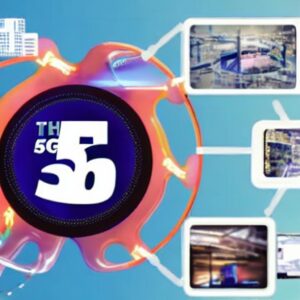Introduction
The fifth generation of mobile network technology, commonly referred to as 5G, has been a topic of much discussion and anticipation in recent years. 5G represents a significant leap forward from its predecessor, 4G, with improved speeds, lower latency, and enhanced capabilities that will enable new applications and use cases across a variety of industries.
Key benefits
One of the key benefits of 5G is its ability to deliver faster download and upload speeds than 4G. While 4G typically offers download speeds of up to 100Mbps, 5G promises to deliver speeds up to 20 times faster, with some estimates suggesting peak speeds of up to 10Gbps. This means that users will be able to download and upload large files in seconds, stream high-quality video with minimal buffering, and enjoy smoother online gaming experiences.

In addition to faster speeds, 5G also offers lower latency, which is the time it takes for data to travel between a user’s device and the network. 5G networks have the potential to reduce latency to just a few milliseconds, compared to the 20-30 milliseconds typically experienced with 4G. This will enable new applications such as real-time virtual and augmented reality experiences, autonomous vehicles, and remote surgery, where even a slight delay can have serious consequences.
Feature of 5G
Another key feature of 5G is its ability to support a significantly larger number of connected devices. While 4G can support up to around 4,000 connected devices per square kilometer, 5G is expected to support up to one million devices per square kilometer. This will enable the deployment of large-scale IoT (Internet of Things) networks, where sensors and devices are connected to the internet to provide real-time data and insights.

New business models
5G will also enable new business models and revenue streams for telecom operators and other industries. For example, 5G networks can be used to provide new services such as network slicing, where operators can offer customized network services to different customers with varying requirements. This can include low-latency services for autonomous vehicles, high-speed services for video streaming, and low-cost services for IoT devices.
Concerns
However, there are also some concerns around the deployment of 5G, particularly around its potential impact on human health and the environment. Some studies have suggested that the higher frequencies used by 5G networks may have adverse effects on human health, although there is currently no scientific consensus on this issue. There are also concerns around the environmental impact of 5G, with some critics suggesting that the deployment of large numbers of small cell towers may have negative effects on wildlife and ecosystems.
Conclusion
5G represents a significant leap forward in mobile network technology, with the potential to deliver faster speeds, lower latency, and new applications and use cases across a variety of industries. While there are some concerns around its deployment, it is clear that 5G will play a key role in shaping the future of the digital economy, enabling new business models, and driving innovation across a range of sectors.
#5G #FutureOfMobile #FasterSpeeds #LowerLatency #IoT #NetworkSlicing #Innovation #DigitalEconomy #NextGeneration #NewApplications #ConnectedDevices #HighSpeeds #LowLatency #RealTimeExperiences #AutonomousVehicles #RemoteSurgery #AR #VR #SmartCities #DataRevolution #MobileNetworks

